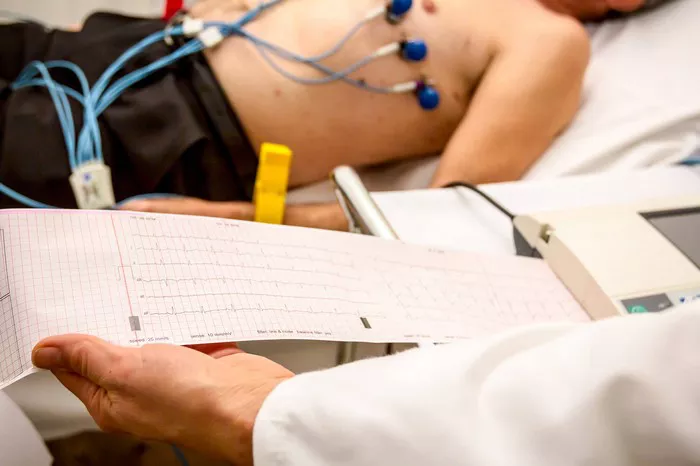An electrocardiogram (EKG or ECG) is a common diagnostic tool used to assess the electrical activity of the heart. It is often used in clinical settings to detect abnormalities in heart rhythm and structure. One question that frequently arises is whether an EKG can show blockages in the arteries supplying the heart with blood. In this article, we delve into the capabilities and limitations of EKGs in detecting blockages, exploring how they fit into the broader landscape of cardiovascular diagnostics.
Understanding The Basics of An EKG
Before delving into the specifics of blockages, it’s crucial to understand how an EKG works. An EKG records the electrical signals generated by the heart as it contracts and relaxes. These signals are represented as waves on the EKG tracing, with each wave corresponding to a specific event in the cardiac cycle.
see also: Common Medications Used for Afib
What Can an EKG Detect?
Heart Rhythm Abnormalities: EKGs are highly effective in detecting irregularities in heart rhythm, such as atrial fibrillation, ventricular tachycardia, and bradycardia.
Conduction Abnormalities: EKGs can identify issues with the heart’s electrical conduction system, such as bundle branch blocks and heart blocks.
Heart Enlargement: Certain patterns on an EKG can indicate that the heart is enlarged, which may be a sign of underlying cardiac conditions
Acute Cardiac Events: EKGs are crucial in diagnosing acute cardiac events like heart attacks (myocardial infarctions) by detecting specific changes in the EKG pattern.
see also: The Most Effective Treatment for Ventricular Fibrillation
Limitations of EKGs in Detecting Blockages
While EKGs are invaluable in many aspects of cardiac diagnosis, they have limitations when it comes to directly detecting blockages in coronary arteries:
Indirect Indicators: EKGs can show signs that suggest the possibility of blockages, such as ST-segment changes indicative of myocardial ischemia. However, these changes are not specific to blockages and can occur in other cardiac conditions.
Limited Sensitivity: EKGs may miss blockages, especially if they are not causing significant ischemia or if the blockages are in locations that the EKG electrodes do not directly monitor.
Chronic vs. Acute Blockages: EKGs are better at detecting acute blockages during a heart attack when there are clear EKG changes. Chronic, stable blockages may not always produce detectable EKG changes.
Variability: Individual differences in EKG patterns and the presence of other cardiac conditions can complicate interpretation.
Complementary Tests for Assessing Blockages
Coronary Angiography: This invasive procedure provides a direct visualization of the coronary arteries and is the gold standard for diagnosing blockages.
Stress Tests: These tests, such as stress EKGs or stress echocardiograms, assess the heart’s response to increased workload and can detect ischemia caused by blockages.
Cardiac CT Angiography: This non-invasive imaging technique provides detailed images of the coronary arteries, allowing for the detection of blockages.
Nuclear Imaging: Techniques like myocardial perfusion scans can assess blood flow to the heart muscle and detect areas of reduced perfusion due to blockages.
When Is An EKG Still Valuable?
While EKGs may not directly show blockages, they remain valuable in several scenarios:
Screening: EKGs are often used as part of routine cardiac screenings to assess overall heart health and detect potential abnormalities.
Monitoring: EKGs are crucial in monitoring patients with known heart conditions to assess rhythm changes and detect new abnormalities.
Emergency Situations: In acute cardiac events like heart attacks, EKGs play a vital role in rapid diagnosis and triage.
Conclusion: The Role of EKGs in Cardiovascular Health
In conclusion, while an EKG can provide valuable information about heart rhythm, conduction abnormalities, and acute cardiac events, its ability to directly detect blockages in coronary arteries is limited. Understanding the strengths and limitations of EKGs helps healthcare professionals integrate them effectively into comprehensive cardiovascular assessments. For diagnosing blockages, complementary tests such as coronary angiography, stress tests, cardiac CT angiography, and nuclear imaging are often necessary for a complete evaluation.


